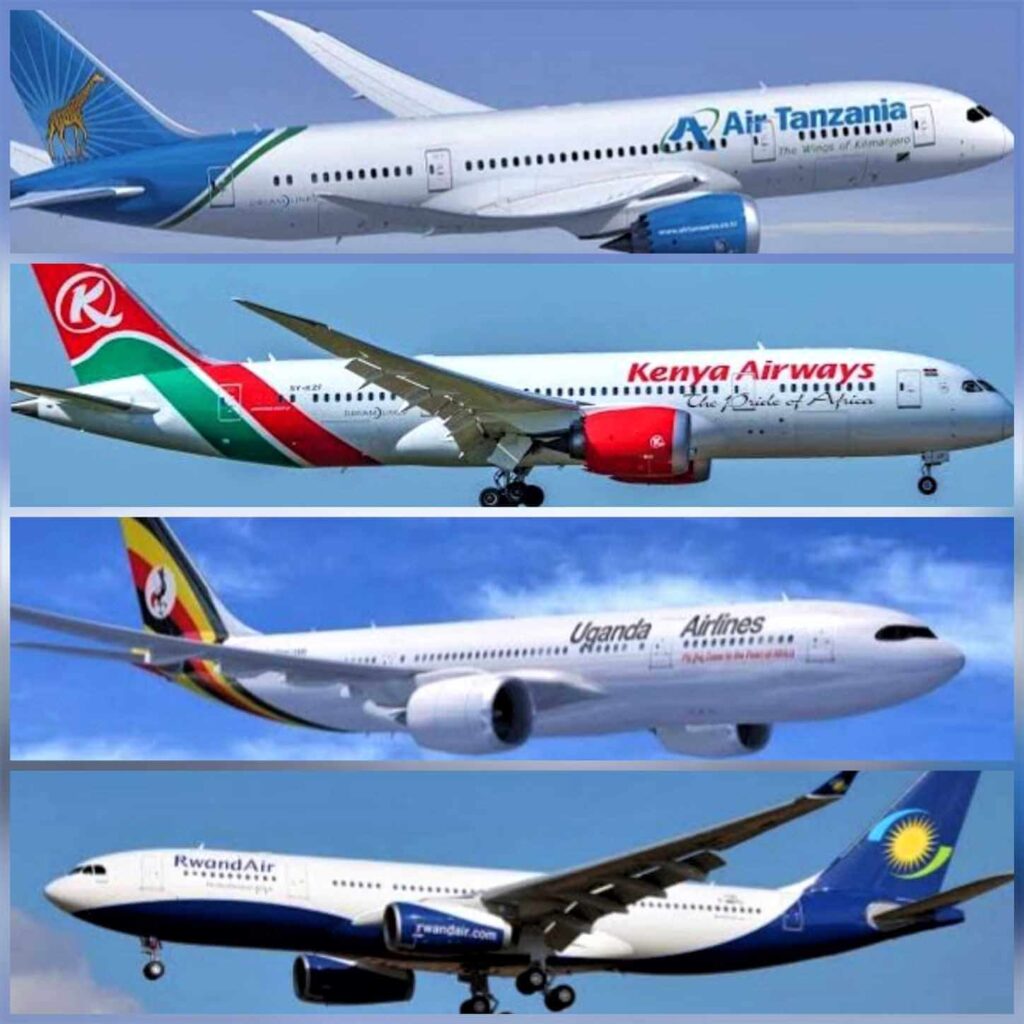- The open Skies Policy in civil aviation aims to ease international airlines’ access to national airports to increase the flow of tourists and develop their potential as regional air hubs.
- Kenya is seen to warm up to more international carriers, with the latest being flyDubai, which is now flying directly to the Moi International Airport, Mombasa, after launching last week.
- Apart from attracting foreign carriers mainly from Europe and the Middle East, airlines from Kenya, Uganda, Tanzania, Rwanda, and other EAC states will operate across borders without restrictions.
The Open Skies Policy in Kenya
Kenya is slowly heeding calls by the private sector to open its skies to more international airlines seeking to fly directly to the country’s Coast, a leading beach destination preferred mainly by Europeans.
This comes as the government also banks on the recently unveiled “visa-free” to open the country to more visitors, aiming to grow the country’s tourism industry.
The open skies policy in civil aviation aims to ease international airlines’ access to national airports to increase the flow of tourists and develop their potential as regional air hubs.
Apart from attracting foreign carriers mainly from Europe and the Middle East, airlines from Kenya, Uganda, Tanzania, Rwanda, and other EAC states will operate across borders without restrictions.
Kenya is seen to warm up to more international carriers, with the latest being flyDubai, which is now flying directly to the Moi International Airport, Mombasa, after launching last week.
The airline, according to the country’s Transport Cabinet Secretary Kipchumba Murkomen, was accorded clearance to begin direct flights to Mombasa in May last year,
It will have four scheduled weekly flights on Mondays, Wednesdays, Fridays and Sundays.
“The launch of this route is monumental for Kenya’s aviation sector and the people of the Coast region since it will increase tourist arrivals to Mombasa from across flyDubai networks, leading to the growth of the hospitality and tourism sector, creation of jobs directly and indirectly, and the revitalisation of the economies of the City of Mombasa and the region at large,” the CS said.
He said the ministry will continue to capitalise on the visa-free policy initiated by President William Ruto to encourage more partnerships with key players in the aviation sector and engage in mutually beneficial discussions that will result in increased tourist arrivals, job creation and overall growth of the country’s economy.
Mombasa is strategic for international tourists who seek to stay in the coastal city and explore the South Coast region, mainly the world-renowned beach destination of Diani and hotels and beach facilities in Malindi.
It is also close to the Tsavo National Park, several marine parks, and other tourist attractions in the coastal region.
Read also: EAC States Urged to Open Skies to Promote Tourism
Tourism on the Kenya coast kicking
Coast hoteliers and travel agencies have been pushing for the open skies policy as one of the ways to leapfrog the tourism industry in the post-COVID-19 era.
According to Pollman’s Group operations director and seasoned hotelier Mohammed Hersi, the national government must allow more scheduled flights to the region.
He is among industry players who have expressed optimism as the government slowly allows more access into the country, particularly the coastal region.
Mombasa recently welcomed the first charter from Prague, Czech, after a 10-year break, three dreamliners from Italy, and weekly flights from Italy and Poland. He noted that Bulgaria, Romania, Netherlands and hopefully the UK are all in the pipeline.
Meanwhile, Ethiopian Airlines is doing 14 flights (Dreamliners) per week, Discover Airlines by Lufthansa has five flights per week, while national carrier Kenya Airways has nine to 12 flights a day between the Jomo Kenyatta International Airport (JKIA) hub in Nairobi and Mombasa, connecting the coastal city to the region’s aviation hub.
Local low-cost carrier Jambojet also has about nine flights a day between Nairobi and Mombasa, up to four on the Diani route, four to five daily flights between Nairobi and Malindi, and connecting to Lamu.
Other domestic carriers connecting the coast region to other parts of the country include Safari Link and Skywards.
“Simply put, Kenya coast is happy. Those flight not only support the beach resorts they also benefit camps in Amboseli in Kajiado County and even Mara in Narok including Taita Taveta. It’s not just about Mombasa. Open skies is just an enabler,” Hersi said, “step by step open skies is happening.”
The industry is looking forward to Turkish Airlines and Qatar Airways, who are also eager to fly back to Mombasa.
“If we are to grow our numbers then access is key,” Hersi said.
According to another veteran hotelier and CEO of Wells Corporate and Holiday Travel agency Wafula Waswa, Kenya’s Coast region has the potential to receive up to 3,000 international visitors per day if the skies are open.
He advocates for direct flights to Mombasa instead of having international tourists land in Nairobi first before connecting to Mombasa.
Read also: Suluhu closer to Bagging Open Skies Air Transport Agreement with US
Kenya targets 5.5m international tourists by 2028
Kenya plans to more than double international tourist arrivals in the next five years, according to plans by the country’s lead marketing entity, the Kenya Tourism Board (KTB).
This comes as the World Travel and Tourism Council (WTTC), in collaboration with VFS Global, projects that Africa’s travel and tourism sector could add $168 billion to the continents.
However, This potential growth depends on policies to unlock annualised growth of 6.5 per cent, reaching a contribution of more than $350 billion in the long term.
According to Hersi, the continent needs simplified visa processes to ease travel, better air connectivity, and marketing campaigns to highlight the wealth of destinations in the continent.
Kenya aims to increase annual international tourist arrivals to 5.5 million in the next five years, increasing the country’s foreign exchange earnings, creating jobs and growing businesses.
KTB is working with private sector players to market the country effectively and hit record numbers.
The sector has been experiencing a full recovery since last year, according to KTB Chairperson Francis Gichaba.
The Tourism Research Institute (TRI) has projected this year’s arrivals will hit 2.2 million, up from the 1.9 million estimated for last year, with the government yet to share the latest numbers.
In 2022, arrivals were 1,483,752, a 70.5 per cent increase compared to 2021 arrivals of 870,465.
The country’s best year remains 2019, when arrivals hit a high of 2.04 million visitors with earnings of Sh296.2 billion.
Earnings are expected to hit Sh359.1 billion this year and then Sh396.1 billion next year.
Global economic factors and COVID-19 recovery patterns informed the projections.
“The effects of the Russia invasion of Ukraine on some key markets and on global tourism supply channels was also taken on board,” TRI acting Chief Executive Officer David Gitonga said.
The US remains Kenya’s leading international tourist source, followed by Uganda and the UK.











